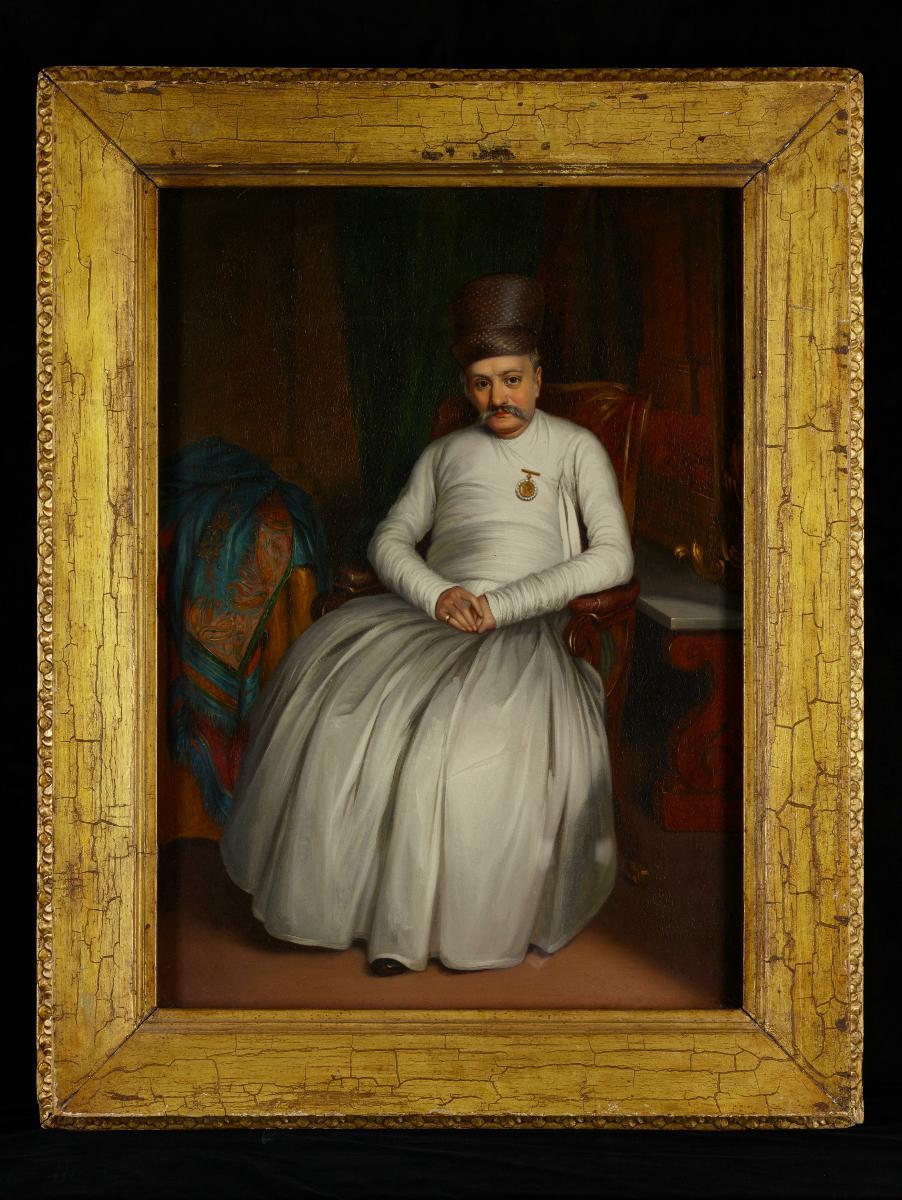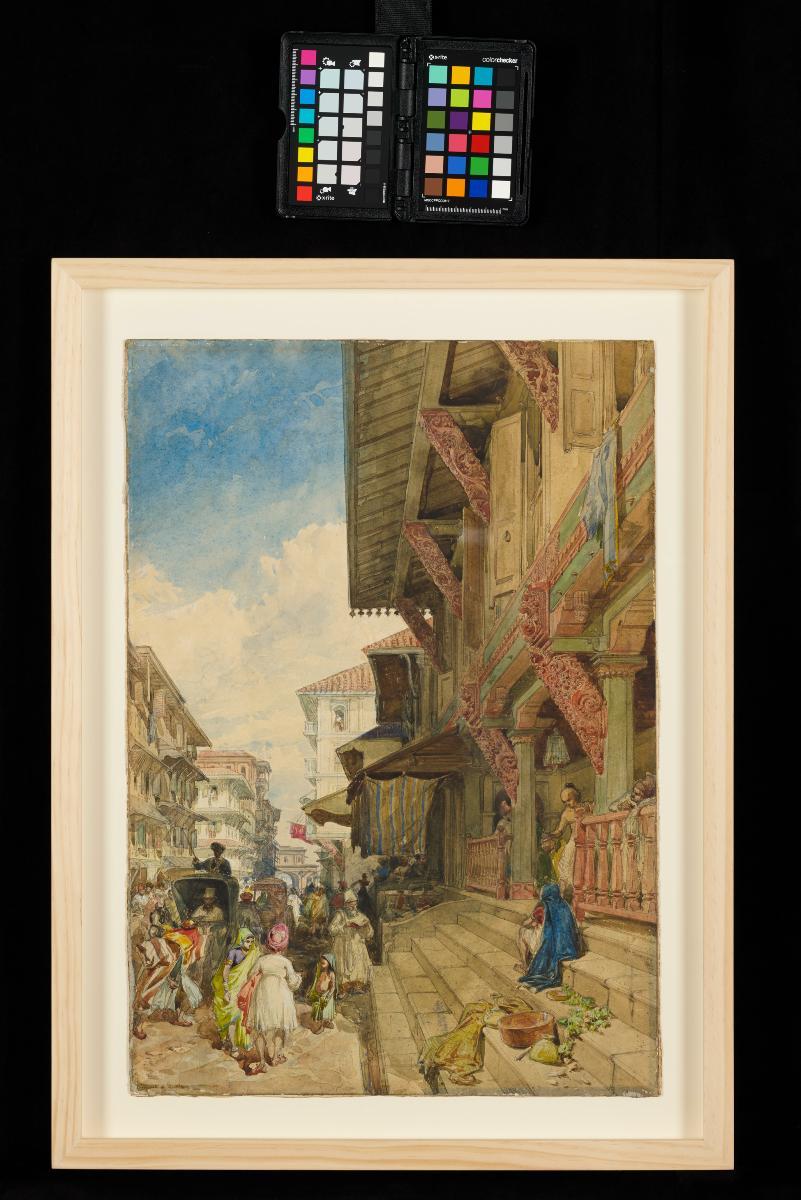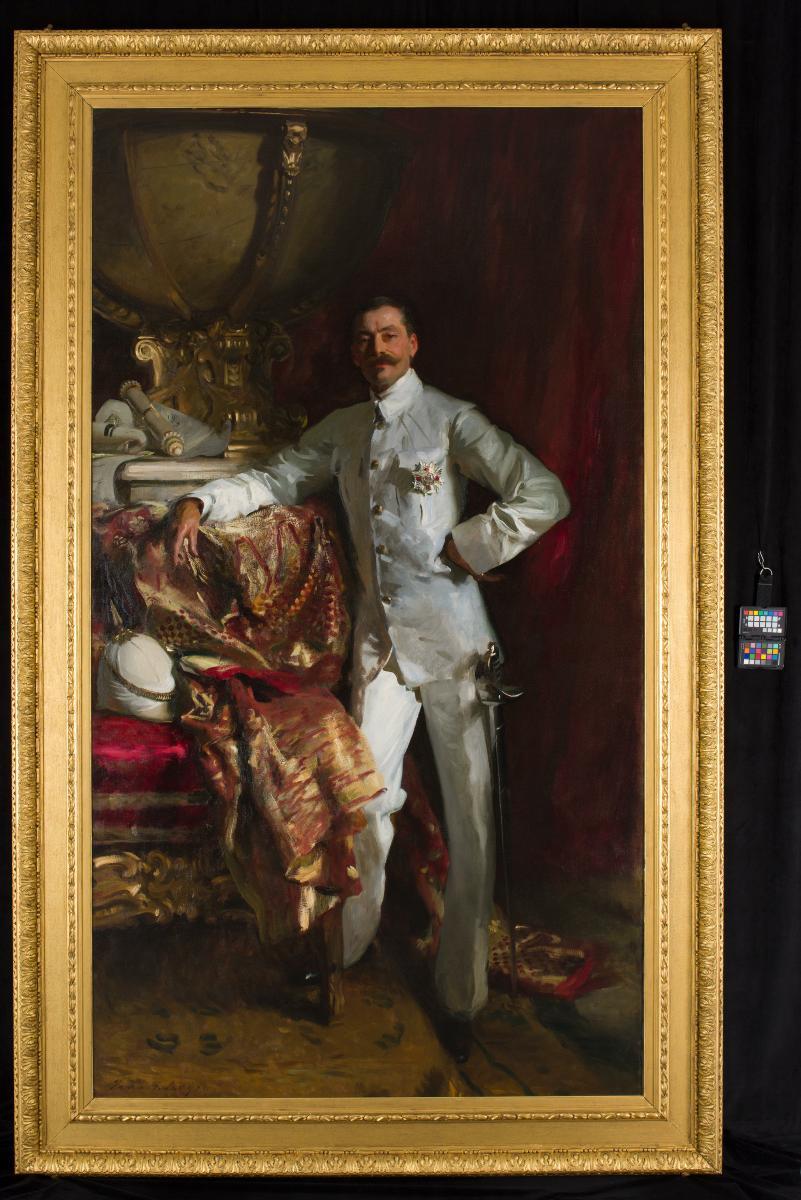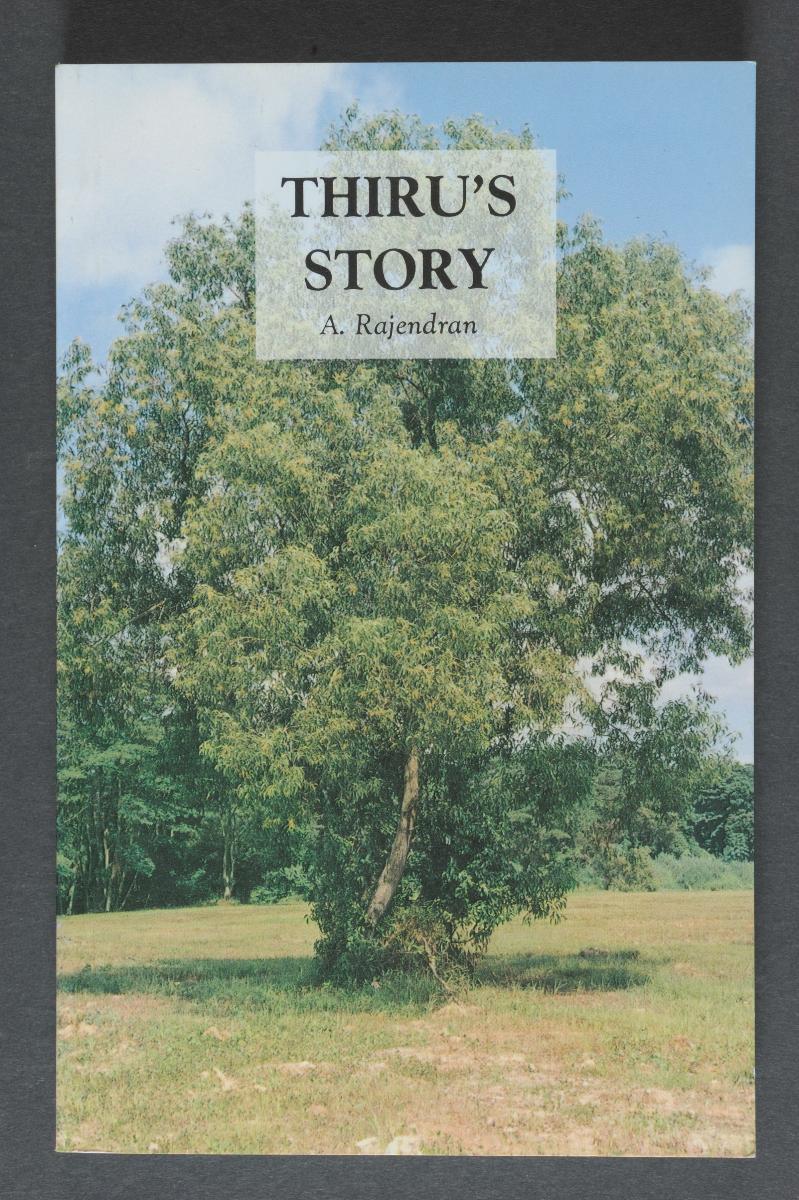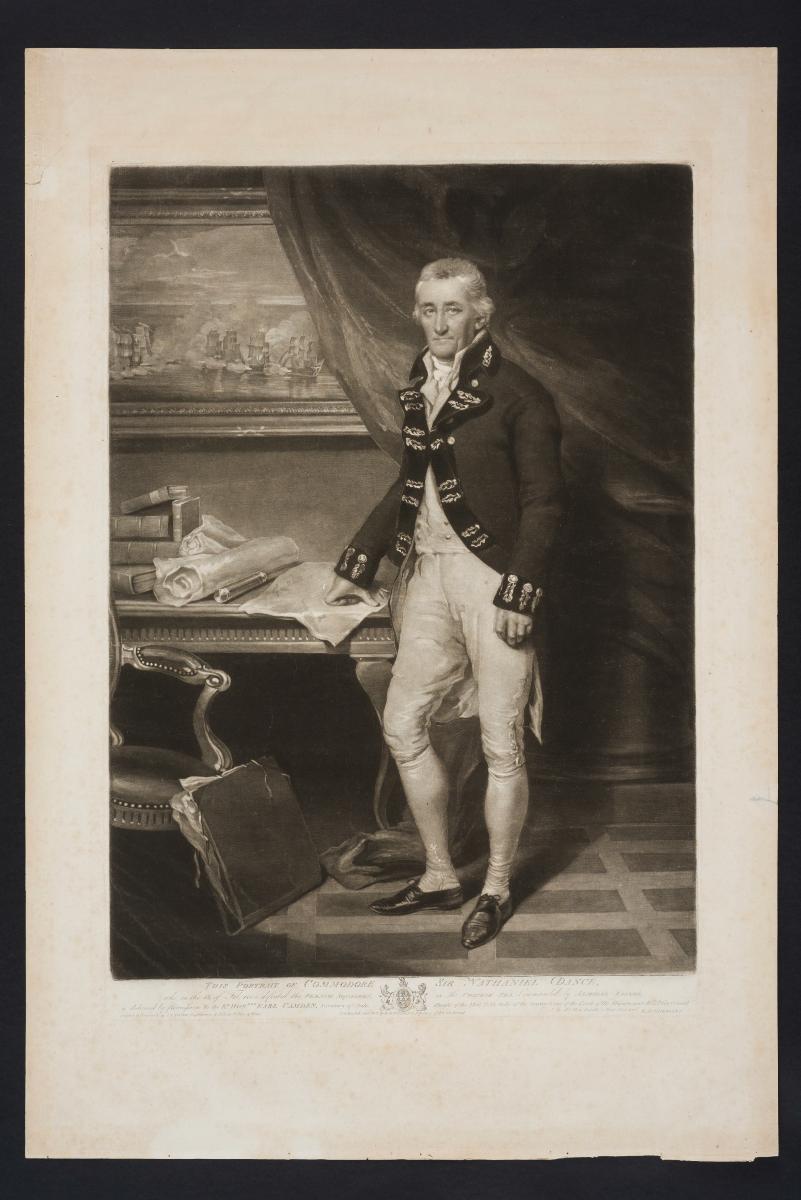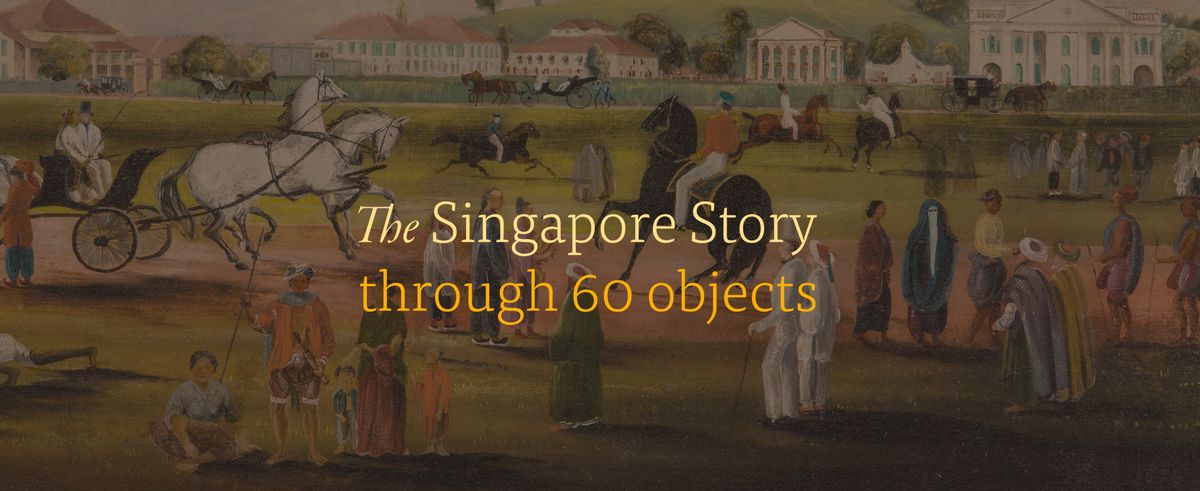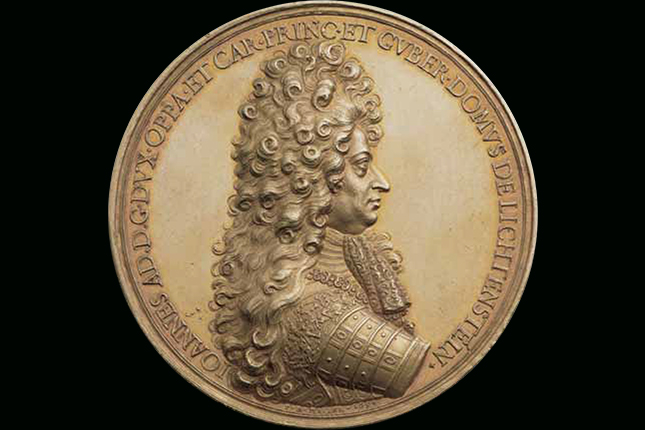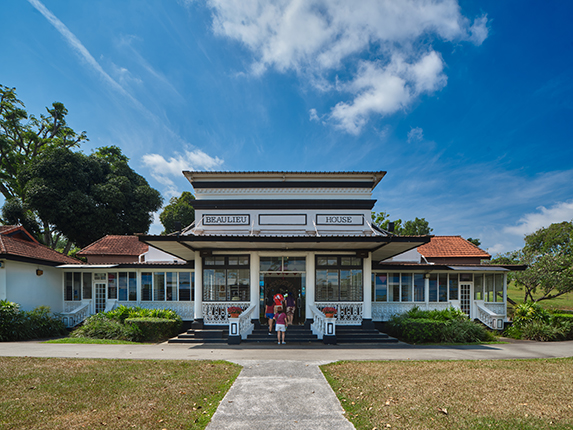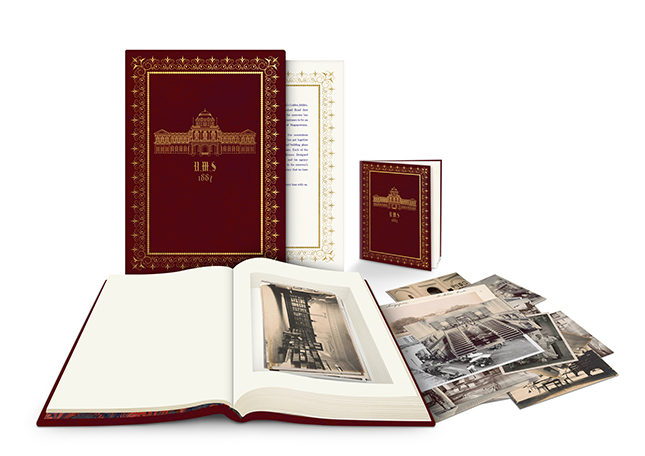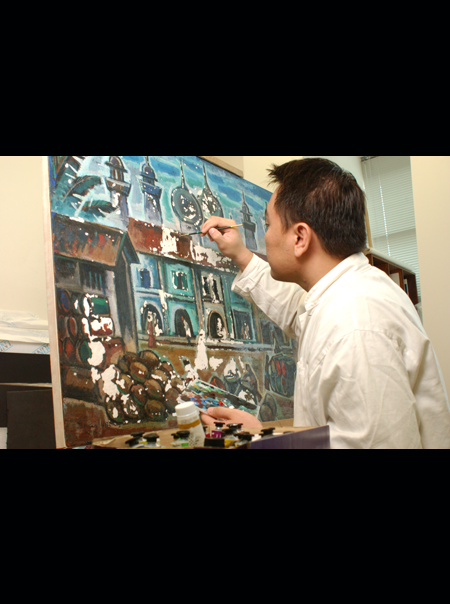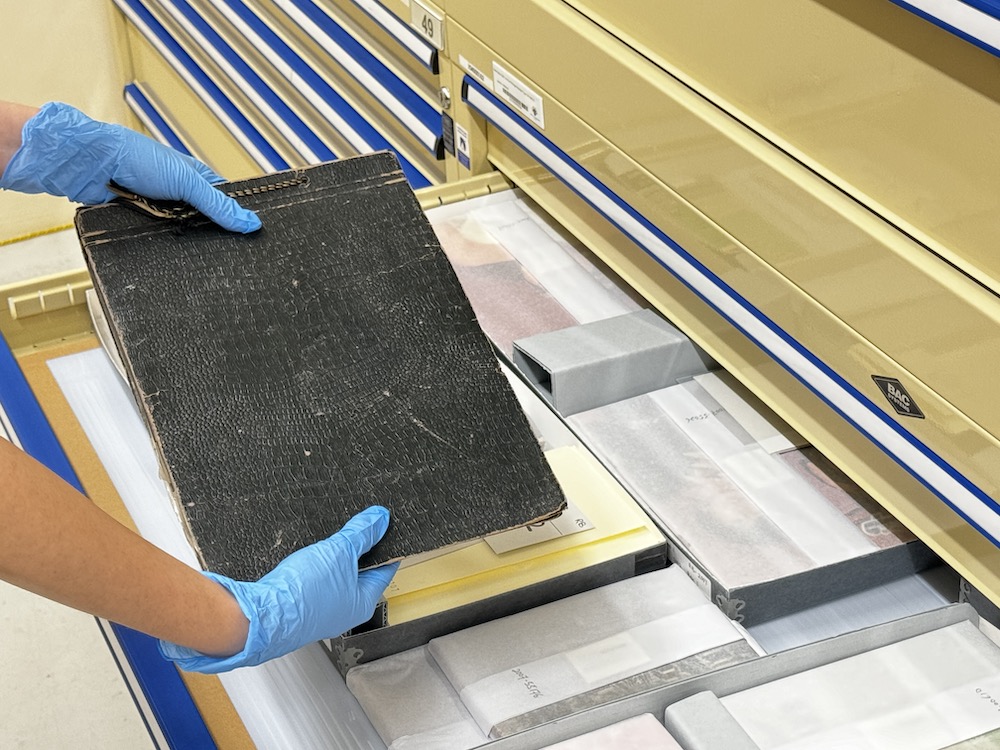Frame size: 83.8 x 65.5 x 5.5 cm
Sir Jamsetjee Jejeebhoy (1783–1859), 1st Baronet Jejeebhoy of Bombay, CMG, was a Parsi-Indian merchant who made a huge fortune in cotton and the opium trade to China. He was also a great philanthropist, supporting pub-lic works, hospitals, and women's education, among other worthy causes. In this portrait, Jejeebhoy wears traditional Parsi attire – a white double-breasted coat with waistcloth of linen and cotton, and a tall pagri (hat). The painting may have been created in celebration of his recognition by Queen Victoria, as the medal she presented to him is prominently featured on his chest.Known as the Merchant-Prince of Bombay, he was the best known of the Parsi merchants trading with China. Alongside other Parsis and Indians, he played a major role in the globalisation of Asian economics.This portrait is attributed to the Chinese painter Lamqua (1802–ca.1860), or an apprentice in his studio in Canton (modern-day Guangzhou). Lamqua was famous for his painting skills, in particular, for executing European-style works with depth of field and 3-dimensional figures. His popular workshop produced portraits, harbour views, and other subjects that appealed to for-eign customers. Several of Lamqua’s paintings were exhibited at the Royal Academy, London, in the 1830s and 1840s – a great honour for any painter




